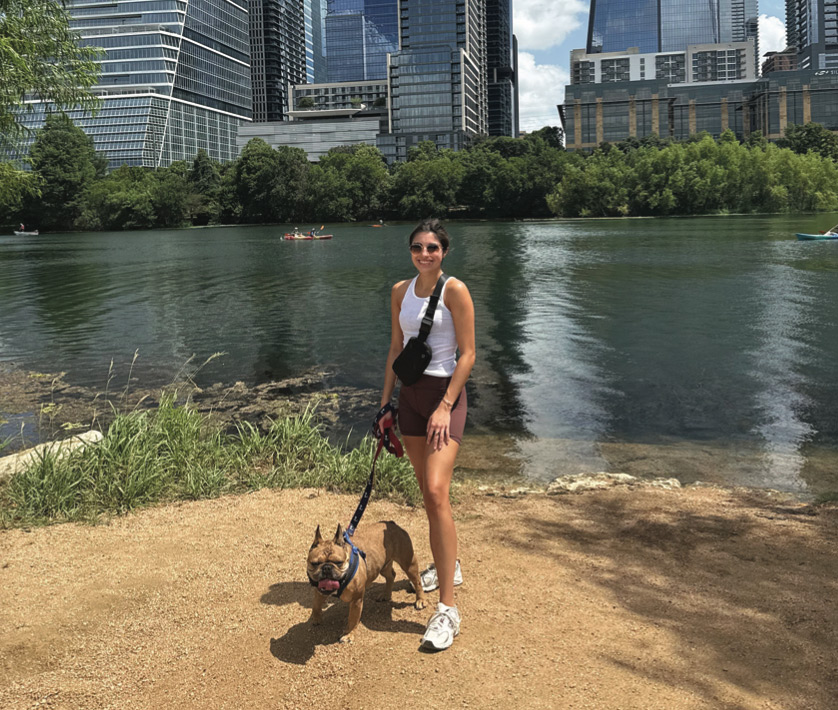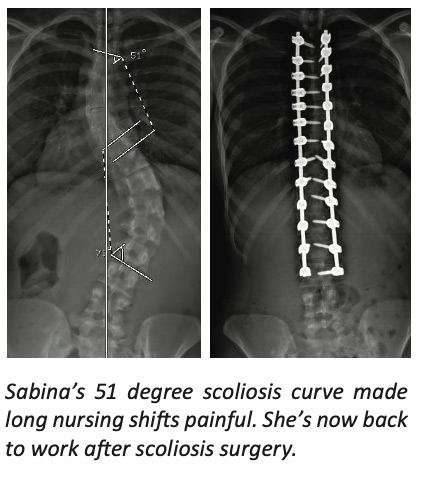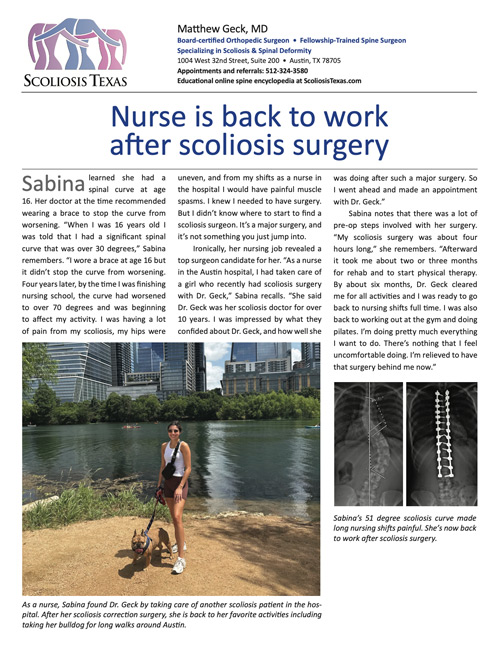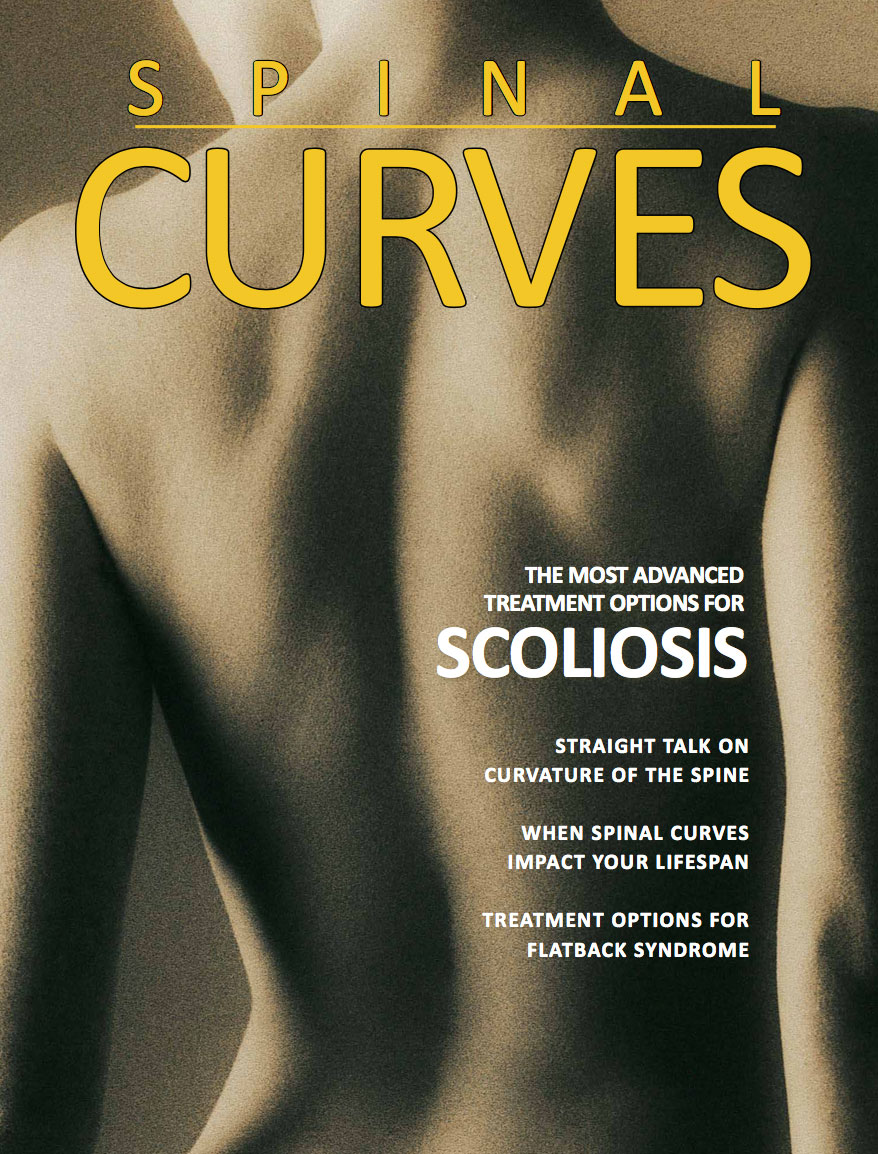Minimally Invasive Scoliosis Surgery

Sabina learned she had a spinal curve at age 16. Her doctor at the time recommended wearing a brace to stop the curve from worsening. “When I was 16 years old I was told that I had a significant spinal curve that was over 30 degrees,” Sabina remembers. “I wore a brace at age 16 but it didn’t stop the curve from worsening. Four years later, by the time I was finishing nursing school, the curve had worsened to over 70 degrees and was beginning to affect my activity. I was having a lot of pain from my scoliosis, my hips were uneven, and after my shifts as a nurse in the hospital, I would have painful muscle spasms. I knew I needed to have surgery. But I didn’t know where to start to find a scoliosis surgeon. It’s a major surgery, and it’s not something you just jump into.
 Ironically, her nursing job revealed a top surgeon candidate for her. “As a nurse in the Austin hospital, I had taken care of a girl who recently had scoliosis surgery with Dr. Geck,” Sabina recalls. “She said Dr. Geck was her scoliosis doctor for over 10 years. I was impressed by what they confided about Dr. Geck, and how well she was doing after such a major surgery. So I went ahead and made an appointment with Dr. Geck.”
Ironically, her nursing job revealed a top surgeon candidate for her. “As a nurse in the Austin hospital, I had taken care of a girl who recently had scoliosis surgery with Dr. Geck,” Sabina recalls. “She said Dr. Geck was her scoliosis doctor for over 10 years. I was impressed by what they confided about Dr. Geck, and how well she was doing after such a major surgery. So I went ahead and made an appointment with Dr. Geck.”
Sabina notes that there was a lot of pre-op steps involved with her surgery. “My scoliosis surgery was about four hours long,” she remembers. “Afterward it took me about two or three months for rehab and to start physical therapy. By about six months, Dr. Geck cleared me for all activities and I was ready to go back to nursing shifts full time. I was also back to working out at the gym and doing pilates. I’m doing pretty much everything I want to do. There’s nothing that I feel uncomfortable doing. I’m relieved to have that surgery behind me now.”







